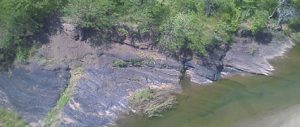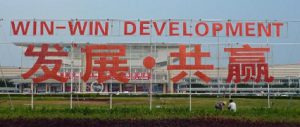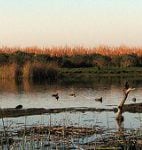The shores of Lake Kivu, encircled by the Democratic Republic of the Congo (DRC) and Rwanda, are among the most tortured places on earth. They witnessed the horrific bloodletting of the 1994 Rwandan genocide and the subsequent escape of Hutu militias across the border. This was also the place of crossing for hundreds of thousands of Hutu civilians escaping from the forces of Rwandan president Paul Kagame in and after 1994. And it is the spot where the Rwandan military entered the DRC and, as documented in the United Nations report of October 2010, allegedly committed the area’s second genocide, this time mainly against the Congolese people.
Tens of thousands of women (and probably many more) have been brutally raped on the shores of this lake in the last two decades. In 2004, Rwandan-backed forces of the Rally for Congolese Democracy (RCD), led by General Laurent Nkunda, penetrated the town of Bukavu and raped about 16,000 women on a single weekend after the general reportedly told his troops “This city is yours for three days”. Sporadic fighting is still raging in and around Kivu and grim refugee camps are periodically moved from one location to another, though they are always present, not too far from the shores of the lake.
But Kivu’s nickname of “Killer Lake” comes not only from its past and present wars. It is also inspired by the enormous quantities of dangerous gases dissolved in layers beneath its surface: carbon dioxide, which has bubbled up from volcanic rock below, and methane – some 55 billion cubic metres of it – produced by bacteria on the lake bed. Scientists fear volcanic activity could trigger a methane explosion or sudden release of suffocating carbon dioxide, and that the lake therefore poses great danger to the roughly two million people living along its shores.
Two lakes in Cameroon – Nyos and Monoun – are in a similar condition. In 1986, Lake Nyos exploded, releasing around 1.6 million tonnes of carbon dioxide, which shot up into the air at 100 kilometres an hour and asphyxiated 1,600 to 1,700 people. In this context, local anxiety around Kivu is easy to understand, particularly as reports indicate the massive pool of methane in the lakebed has induced a steady rise in carbon dioxide and gas levels in recent years.
But now Rwanda is trying to turn this shadow over local people into a blessing. The government, which is so far unable to provide an uninterrupted electricity supply even to the tiny 5% to 7% of people connected to the grid, is looking at Lake Kivu as a potential supplier of energy and income. Teaming up with western companies, it is working on the development of new thermal-power plants that would run on natural gas. Official sources say that “exploitation of methane-gas energy in Lake Kivu has the capacity to support a 700-megawatt power plant.” That would be enough to satisfy this poor country’s energy needs, and even to export power to neighbouring nations.
In 2009, the Rwandan government signed a US$325 million (2.2 billion yuan) deal with US-based energy firm Contour Global, which agreed to extract the gas and generate up to 100 megawatts of power for Rwanda as well as its neighbours. The scheme, the first phase of which is already pumping methane from the middle of the lake to the shores for processing, is due to complete in 2012.
The company is playing down potential risks, arguing that “extracting the gas greatly mitigates the environmental hazards associated with a natural release of the lake gases and provides an environmentally friendly and sustainable source of power generation.”
Some experts support these claims. Speaking in Nairobi, Kenya, Dr Abou Amani, a regional hydrologist at UNESCO, said: “Scientifically speaking, pressure has built up at the bottom of Lake Kivu, and if the gas is not extracted, it will eventually explode and could very well endanger the lives of approximately two million people. In recent years, the government of Rwanda has been working with Rochester Institute of Technology to mitigate the danger.”
The reaction of the scientific community is far from unanimous, however. News outlet RT reports that Alfred Wüest, a bio-geochemist based at the Swiss Federal Institute of Aquatic Science and Technology and part of a team of 15 scientists to prepare a safety report on methane production at Lake Kivu, has warned the lake could become a “giant gas bomb” if precautions are not taken and good production practices not observed.
“Extracting valuable methane from the lake’s depths might trigger an outburst of gas that could wash a deadly, suffocating blanket over the 2 million people who live around Kivu’s shores,” explains geologist Ole H Nielsen on his environmental blog What On Earth. “A group of biochemists warns that if unregulated extraction continues unabated, it could trigger a catastrophic outgassing of carbon dioxide – another dissolved gas abundant in the lake’s depths. Such a disaster occurred at Lake Nyos in Cameroon in 1986, killing 1,700 people. Kivu contains 300 times more CO2 than Nyos did.”
Nielsen goes on to say that the most dangerous practice is pumping water into the lake’s shallows. “If degassed water is dumped at the surface, it sinks, mixing water and salts between the lake’s layers. Enough mixing would disrupt the density stratification of the lake, and could bring huge volumes of CO2-rich water to the surface. The pressure reduction would cause the CO2 to bubble out of solution.”
I managed to rent a boat in Gisenyi, a city on the Rwandan side of the lake, and convinced the skipper to take me as close as possible to the methane-extracting installations operated by national utilities RECO & RWASCO. It took some 30 minutes to navigate our way to the huge (by local standards) platform and tower in the middle of Lake Kivu, partly because the tower has been encircled by a perimeter supposed to contain spills. Not far away floated a barge belonging to REC (Rwanda Energy Company) – probably a replacement for another barge that sank 300 metres to the bottom of the lake after it was loaded with extraction equipment, hardly an event to reassure environmentalists.
The danger of explosion aside, the shores of once pristine Lake Kivu are now clearly and visibly polluted. Foam, debris and a brown sticky substance coat the shores of the cities of Gisenyi in Rwanda and Goma in the DRC. The movement of vessels is increasing. Multinational companies are searching for anything of value around the lake, as well as on its bottom. In 2008, Vangold Resources, a Canadian oil, gas and mineral corporation, carried out the first phase of oil exploration in the area, known as the East Kivu Graben that covers parts of Nyungwe and Gishwati forests, and Lake Kivu itself.
Misery is still widespread and Goma’s drainage system is extremely primitive, with the result that the lake is contaminated with human excrement.
People living around the lake are nervous. They have not had much to celebrate lately. As well as the war raging in the DRC, they have also suffered the fallout of the 2002 eruption of the Nyiragongo volcano, which killed dozens of people in the already devastated city of Goma and sent lava flowing as far as the lakeshore. As it went, it swallowed hundreds of houses, community centres and even the international airport, making Goma, often described as “hell on earth”, look even more desperate.
The lake is always there. And, set against the backdrop of this enormous volcano, it is majestic. People living on its shore love it and fear it. Children go to swim only in groups, as it is widely accepted that the gases the lake emits can cause a person to lose consciousness and drown.
“If the lake explodes, we all die,” says a boatman on the shore, melancholically. “But we have no place to go, this is where we live.”
Will methane extraction postpone or prevent the explosion as some experts say? Or is it putting this troubled part of the world at even greater risk? Rwanda under Paul Kagame is increasingly authoritarian. (in the 2010 presidential elections, all other candidates were disqualified) Dissent is not tolerated and a debate in the press on such a controversial subject is almost unthinkable: Rwanda’s media was ranked 169 out of 178 countries surveyed in Reporters Without Borders’ 2010 Press Freedom Index. One thing is clear: if Kagame thinks that the exploration should go ahead, there is little to stop him.
Methane is not the only environmental concern around Lake Kivu. War – which always harms the environment – continues to rage in the DRC, as well as poaching and unbridled logging. Locals quietly report that, during the 1994 genocide in Rwanda and Kagame’s consequent dash into Congo, tens of thousands of human bodies were thrown into the lake.
Deep and beautiful Killer Lake holds terrible secrets under the surface of its grey waters. Nobody can say for certain whether it will bring more sorrows to the people living on its shores or, one day, offer them the gift of clean energy and a better life.
Andre Vltchek is a novelist, filmmaker, investigative journalist and author. His latest non-fiction book – Oceania – looks at neo-colonialism in Polynesia, Micronesia and Melanesia.
Homepage image by Andre Vltchek




![India, Uttarakhand, Haridwar, dam on the Ganga [image: Alamy]](https://dialogue.earth/content/uploads/2020/03/P1YATT-300x200.jpg)

